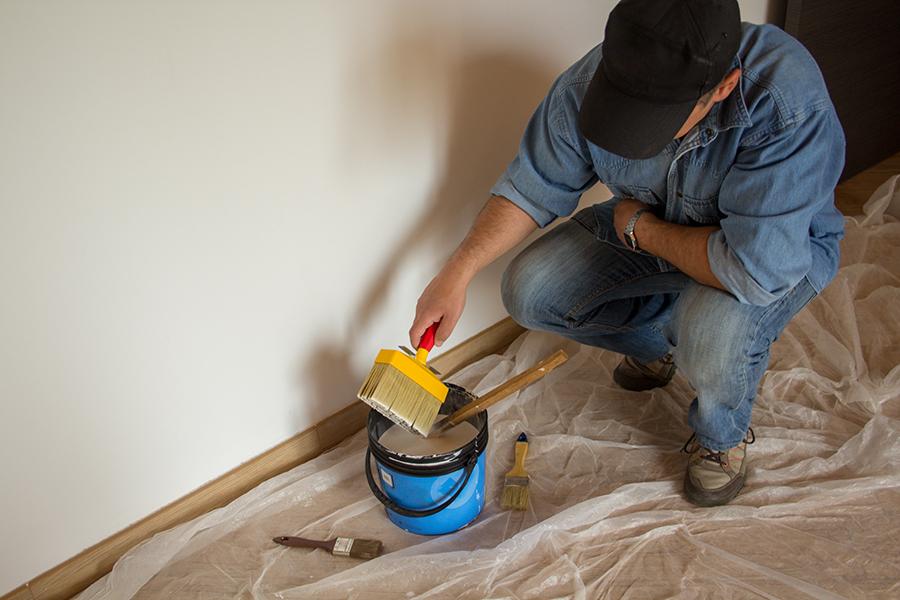Handyman Definition & Meaning - Complete Dictionary
A handyman is a noun used in American English to describe someone who is skilled or employed at doing various small tasks and odd jobs around the house. From fixing broken items and mending fences to painting walls, handymen take care of all kinds of home repairs. In this article, we will explain the definition and meaning of a handyman as well as provide examples of how it can be used in a sentence. We’ll also provide some free resources for learning more about the word and its usage in American English. Finally, we’ll discuss how people can find a good handyman to help them with their home repair needs.
Handyman might specialize in just one trade or he may have knowledge in multiple areas that makes him capable of dealing with a variety of household issues. The term is derived from the adjective “handy” which means useful or convenient. A handyman is also known as an odd job man because he often takes on tasks that are too small for general contractors or specialized tradespeople like electricians or plumbers.
I. Introduction
A. Definition of Handyman
A handyman meaning is someone who is skilled in many different things, from carpentry and plumbing to painting and gardening. They are often called upon to do odd jobs or repairs around the house. For example, a homeowner may ask a handyman to replace broken tiles, paint a bedroom, or clean gutters.
B. History of the Handyman Term
The handyman term dates back to prior times when a man who is good at repairing things would be referred to as a handyman. This would usually relate to either inside or outside the house, and whether it is related to fixing or constructing something new or already existing. This term has since been expanded to also include select other tasks and activities such as painting, carpentry, plumbing, and other skills that are needed for home repairs. The term has become so widely used that it is now automatically associated with anyone who can do multiple tasks in one go. A few example sentences of the handyman term being used are “I think I’ll call a handyman for this job” and “My neighbor is really good at handyman work”. This reflects how much the term has evolved over time, from a small circle of people to an almost universal source of skills that are needed for various types of jobs, especially those related to home repairs.
II. What a Handyman Does
A handyman is someone who does general repairs and maintenance tasks around a home or building. They are the go-to person for any small job that needs to be done, such as fixing a leaking faucet or changing out light fixtures. Handymen also often do larger jobs like installing cabinets, painting rooms and replacing windows. They can also provide advice on how best to tackle repairs or renovations. They usually provide an estimate of what it will cost before starting a project and they offer guarantees on their workmanship. A good handyman is an invaluable asset when it comes to keeping a home or office in top condition.
A. Small jobs around the Home
Small jobs around the home can be a great way to stay on top of maintenance and upkeep of your living space. From changing lightbulbs to cleaning out the gutters, to painting a room, there are always projects that need to be done and a Handyman like MyDearWatson Handyman is the perfect candidate for these small jobs. . Taking care of these small tasks can help you avoid bigger problems later on. Plus, it’s a satisfying feeling when a project is completed and you see the results. Doing small jobs around the home can also save you money by avoiding costly repairs down the line. So hire a handyman to do some regular maintenance, and you will not regret it.
B. Hire a handyman to Work on Construction and Building Projects
Hiring a handyman for construction and building projects can be a great way to save time and money. These professionals have the expertise and experience necessary to complete the job quickly and efficiently. They can help with any kind of project from simple repairs to major renovations. Handymen are also well-versed in safety regulations and requirements, meaning that you won’t have to worry about safety hazards or compliance issues. Plus, they can often provide advice on how best to complete the project, as well as offer ideas on cost-effective solutions. All in all, hiring a handyman is an excellent choice when it comes to tackling any construction or building project.
III. Use of the Term Handyman in Everyday Speech
The term handyman is used commonly in everyday speech, usually referring to someone who is capable of solving a variety of tasks. Handymen are skilled in multiple trades and can help with home repairs, installations, electrical work and plumbing. They are also often called upon for renovation projects and for basic maintenance on rental properties. Handymen can be useful for small jobs such as fixing a broken shower or replacing a lightbulb, as well as larger projects like building a deck or installing drywall. When hiring a handyman, it is important to make sure that they are experienced and have the necessary skill set for the job at hand. This will ensure that the project will be done correctly and efficiently. The use of the term handyman has become increasingly common in recent years due to the wide range of tasks they can do, from minor repairs to complex renovations.
A. References to a Handyman in Popular Culture and Media
References to handymen in popular culture and media are quite common. For instance, the character of Tim Taylor from the 1990s sitcom Home Improvement often served as a handyman for his family and neighbors. He was known for his catchphrase “more power!” which has become a popular meme among fans of the show. In movies, characters such as MacGyver have been portrayed as handymen who can solve problems using everyday objects. He is often seen using his knowledge of chemistry and physics to craft improvised solutions to difficult situations. Other examples include the character Bob Vila from This Old House and Joe from the children’s cartoon Handy Manny which both feature handymen with expert problem-solving skills. Overall, references to handymen in popular culture and media serve to emphasize their importance in everyday life.
IV. Dictionary Definitions of Handyman
A handyman is a person that is skilled in a wide variety of repairs, typically around the home. They are knowledgeable and experienced in various areas of house maintenance, building construction, and repair work. Handymen can be called upon to do anything from minor repairs such as replacing light bulbs or fixing a broken window to larger projects like installing new plumbing or remodeling an entire room. They often have a broad range of skills, including carpentry and electrical work, so they can tackle any job with confidence. The dictionary definition of a handyman is someone who is knowledgeable and experienced in a variety of repairs and tasks, especially those needed around the home. Handymen are able to take on both small jobs like changing lightbulbs or fixing broken windows and larger projects such as remodeling rooms or installing new plumbing fixtures. With their knowledge and experience, they can handle any job with confidence, making them an invaluable asset for anyone who needs help with their home maintenance.
A. Oxford English Dictionary of Handyman
The Oxford English Dictionary of Handyman is an invaluable reference for the home improvement enthusiast. It provides a comprehensive guide to the various tools and techniques used by professionals in the trade, as well as definitions of common terms and phrases used in home repair and maintenance. With over 5000 entries, this handy dictionary is an essential resource for anyone looking to do their own projects or repair work around the house. It also contains diagrams and illustrations that make it easier to understand even complex topics. This dictionary is sure to be a helpful companion for any homeowner or DIYer looking to take on their next project.
B. Collins English Dictionary of Handyman
The Collins English Dictionary of Handyman is an invaluable tool for any aspiring DIYer. This comprehensive dictionary covers all the major topics related to home repair and maintenance, from basic tools and techniques to more complex repairs. It includes detailed definitions as well as illustrations and diagrams to help explain how to do certain tasks. Additionally, it provides clear instructions on how to identify and fix common problems around the house. With over 2000 entries, this handyman’s guide is a must-have for anyone looking to take on home improvement projects. It’s easy to use and can help save time, money, and frustration when undertaking DIY projects.
C. Merriam-Webster Thesaurus of Handyman
The Merriam-Webster Thesaurus of Handyman is another invaluable resource for anyone who loves to tackle do-it-yourself projects. It contains thousands of words related to tools, materials, and techniques used in home repair, maintenance, and construction. Whether you’re a novice DIYer or a seasoned professional, this thesaurus is sure to come in handy. You can easily look up synonyms for common terms like “drill” or “saw” as well as more obscure words like “screwdriver” or “hammer”. It also provides helpful definitions so you can be sure you are using the correct terminology when communicating with professionals. Merriam-Webster Thesaurus of Handyman is an essential tool for any homeowner who wants to stay on top of their home repairs and maintenance.
V. Conclusion
A Handyman is that it is an excellent choice for anyone looking to take care of small and medium-sized jobs around the home or office. A handyman is reliable, and efficient, and provides quality services at an affordable cost. It can save you time and money, as well as give you peace of mind that your job will be handled professionally and with the highest quality standards. With its wide range of services, there’s no reason not to give Handyman a try. It’s a great way to make sure your projects are handled properly without breaking the bank.
Handyman Glossary
Here is a comprehensive and detailed handyman dictionary that includes many common terms used in the trade:
1- Acoustic Ceiling
A type of ceiling finish that absorbs sound and reduces noise levels. Acoustic ceiling tiles are made from mineral fibers, such as fiberglass or rock wool, which is covered with a vinyl facing. The acoustic properties of these materials absorb the sound waves that hit the surface, reducing noise levels in the room.
2- Air Duct
An air duct is a system of tubes used to distribute heated or cooled air throughout a building. The air duct system is composed of a series of metal pipes and fittings that connect to an air-handling unit, such as a furnace or air conditioner. The air is then distributed through the ductwork by fans and blowers. Ducts can be made from various materials including galvanized steel, aluminum, fiberglass, or plastic. Insulation may also be added to the ducts to reduce energy loss and noise. The size and shape of the ducts are determined by the layout of the building, climate conditions, type of equipment used, and other factors. Proper installation is important to ensure that the air is delivered efficiently and safely throughout the building.
3- Architrave
An Architrave is a decorative molding that surrounds doors and windows. It is usually installed at the top of the wall, below the lintel, and above the door or window frame.
Architraves can be made from a variety of materials including wood, plaster, stone, and metal. They are often carved with intricate designs, such as fluting or leaf patterns. Architraves are an important part of classical architecture, and they add a touch of elegance to any home or building.
4- Baluster
A baluster is a vertical support that helps hold up a railing, banister, or handrail. Balusters are typically found in staircases, decks, and balconies. They come in a wide range of shapes and sizes and can be made from materials such as wood, stone, metal, and plastic.
5- Baseboard
A baseboard is a type of molding that runs along the bottom of walls and covers the gap between the wall and floor. Baseboards are typically made from wood, but can also be made from other materials such as plastic or metal. They are available in a variety of styles and colors to match the décor of any room. Baseboards can be painted, stained, or varnished to create a desired look.
6- Batten
A batten is a narrow strip of wood or metal that is used to cover seams or joints in wall and roof coverings. Battens are used to hold materials such as roofing felt, insulation, siding, and drywall together. They are also used for reinforcing corners, attaching skirting boards and wainscoting, providing additional strength to joints, and creating a decorative edge. Battens can be made from a variety of materials including wood, metal, plastic, and aluminum.
7- Blind Nail
A blind nail is a type of nail that is hidden from view after it has been driven into the material. The most common type of blind nail is a brad nail, which is a slender nail with a small head that is used to join two pieces of wood together. It is driven into the wood so that the head of the nail is flush with the surface and hidden from view. This makes it ideal for joining pieces of trim or other thin materials together without leaving visible holes or fasteners.
8- Casing
Casing is a type of molding that surrounds doors and windows and covers the gap between the frame and the wall. Casing is typically made of wood, but can also be made of vinyl, plastic, fiberglass, or other materials. It serves both a decorative purpose and a functional one. Casing is used to hide the edges of the door or window opening and to provide a finished look. It also helps protect the wall from weathering and damage caused by movement in the door or window frame.
9- Crown Molding
Crown molding is a type of molding that is installed along the top of walls and ceilings to provide a decorative finish. Crown molding is typically made from wood or synthetic materials and can be used to add character to a room or give it a more finished look. It is also often used to hide imperfections in the wall or ceiling. Crown molding can be installed around windows and door frames, in corners, along baseboards, and even along beams and columns.
10- Dado
A dado is a decorative band or panel that runs along the lower part of a wall. Dados are typically made from wood, stone, or plaster and can range in size from a few inches wide to several feet wide. They are often used to create visual interest and provide a transition between different wall coverings. They are also commonly used in kitchen backsplashes and around fireplaces.
11- Drywall screw
A drywall screw is a type of screw that is specifically designed for attaching drywall to framing. The drywall screw is usually made of hardened steel and has a coarse thread that allows it to easily penetrate into the drywall and secure it firmly in place without breaking or tearing the paper. The head of a drywall screw also typically has a sharp point, which makes it easier to insert into the wall without damaging the surface.
12- Eaves
Eaves are the lower edge of a roof that projects beyond the walls of a building. Eaves are important in protecting the walls and foundation of a building from water damage. They help to divert rainwater away from the walls and foundation, preventing moisture penetration and decay. They also provide shade in hot climates, helping to reduce cooling costs.
13- Fascia
Fascia is a flat board that is installed along the lower edge of a roof and covers the ends of the rafters. It is used to protect the edge of the roof from water damage and to give the roof a finished look. It can be made from various materials such as wood, aluminum, vinyl or PVC. It can also be painted or stained to match the home’s exterior.
14- Finish Nail
A finish nail is a type of nail that is used for trim work and is designed to be covered with putty or paint. Finish nails are typically made from steel and have a either a smooth or ringed shank. The head of the nail is usually slightly larger than that of a common nail, which allows it to be easily concealed with putty, wood filler, or paint. Finish nails range in size from 1/2 inch to 3 inches in length and come in several different gauges.
15- Fire Stop
A fire stop is a material that is used to prevent the spread of fire through openings in walls and floors. It is designed to seal the gap around cables, ducts and other services that penetrate fire-rated assemblies. Fire stops are designed to help contain a fire and limit the spread of smoke within buildings. They can be made from a variety of materials such as mineral wool, concrete, intumescent sealant, pre-formed pillows or sprays.
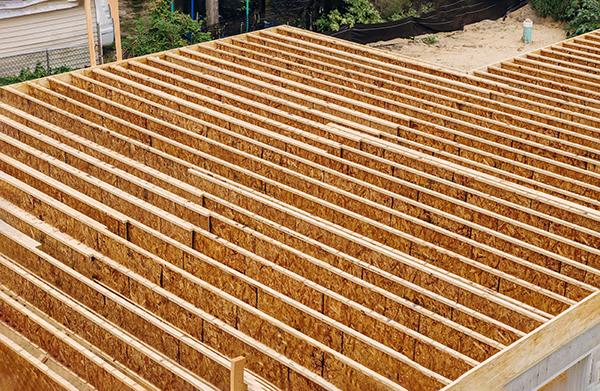
16- Floor Joist
A floor joist is a horizontal structural member that supports the floor and ceiling of a building. Floor joists are typically made from lumber or engineered wood products, and are spaced along the walls of a building at regular intervals. The joists provide support for the floor surface material (such as wood, carpet, tile, etc.) and transfer loads from the floor surface to the foundation below. Floor joists also help to provide lateral stability to the structure and act as a thermal break between floors in multi-story buildings.
17- Gable
A gable is a triangular portion of a wall that closes the end of a pitched roof. A gable is usually the front-facing end of a building and can be decorated with various architectural details such as windows, eaves, and cornices. Gables were commonly used in traditional architecture and are still used today in many styles of buildings.
18- Header
A header is a structural member that spans an opening, such as a door or window, and provides support for the weight above the opening. Headers are typically composed of wood, aluminum, or steel and may be constructed in various shapes, such as L-shaped, U-shaped, or T-shaped. Headers are often used in combination with lintels to provide additional support for the structure above the opening. They can also help to reduce energy loss by providing a barrier between the two sections of the building.
19- Hip Roof
A hip roof is a type of roof that slopes downward from all four sides to the walls of a building. It is characterized by two sloping sides that come together at a ridge, creating four faces that are all the same length. The hip roof is symmetrical and is often used on homes with a gable roof. Hip roofs are more stable than gable roofs and can support more weight. They also require less maintenance since they don’t collect as much debris.
20- HVAC Duct
A hvac duct is a tube or conduit that carries heated or cooled air from an HVAC unit to the various rooms in a building. HVAC ducts are made from a variety of materials, including metal, fiberglass and plastic. The material used depends on the building’s size and other factors. Metal ducts are often preferred to plastic because they are more durable, but they can be more expensive. Fiberglass is also a popular choice for smaller buildings because it is lightweight and easy to install.
21- Insulation
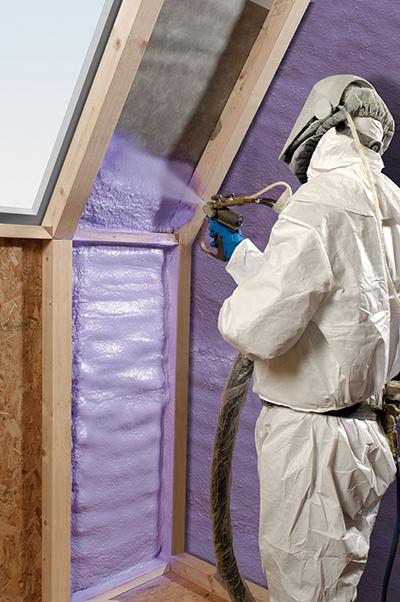
Insulation is a material that is used to reduce heat transfer and improve energy efficiency in a building. Insulation can be made from a variety of materials including fiberglass, cellulose, mineral wool, foam, and plastic. Each type of insulation has its own benefits and drawbacks. Fiberglass is one of the most common types of insulation used in buildings today because it is lightweight and easy to install. It is also fire-resistant and can help to reduce noise levels. Cellulose is another popular type of insulation that is made from recycled paper products like newspapers or cardboard boxes. It is also fire-resistant and provides excellent soundproofing capabilities. Mineral wool is similar to fiberglass but more durable, making it a great choice for exterior walls or areas that may be exposed to the elements. Foam insulation offers superior air and moisture control as well as thermal protection, but it can be expensive. Plastic insulation works well for applications where space is limited or when there are special requirements such as high humidity levels.
22- Jamb
Jamb is the vertical frame around a door or window that provides support and stability. Jamb is typically made of wood, metal, or plastic and may also include weatherstripping and/or a door stop. Jamb is also used to refer to the vertical part of a wall that forms the edge of an opening such as a doorway or window.
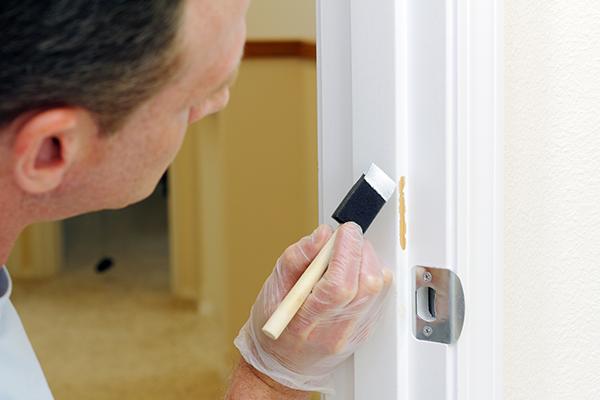
23- Lath
A lath is a thin strip of wood or metal that is used as a base for applying stucco or plaster. Laths have been used for centuries in construction and were originally made from split pieces of wood. Today, laths are usually made from sheet metal, although some are still made from wood. They are used as a support structure for plaster or stucco during the application process. Laths can also be used to create latticework for decorative purposes.
24- Lead Flashing
Lead flashing is a flexible sheet of lead that is used to prevent water from penetrating the joints between roof coverings and walls. It is used to seal the gaps between roof tiles and in valleys, around chimneys, skylights, and other roof protrusions. It is also used to waterproof pipes and other penetrations through the roofing material. Lead flashing is available in different thicknesses and widths to suit the application. It should be installed carefully with a hammer and nail or by soldering with lead-free solder.
25- Miter Joint
A miter joint is a type of joint in which two pieces of material are joined at an angle. The most common type of milter joint is a butt joint, in which two pieces of material are joined side-by-side with some form of fastener, such as screws or nails. The pieces may be cut to different angles and can be used for joining two pieces of wood, metal, or plastic. Other types of milter joints include miter joints (in which the two pieces meet at an angle), lap joints (in which one piece overlaps the other), and dovetail joints (in which the edges of the two pieces fit together like interlocking fingers).
26- Nail plate
A nail plate is a metal plate that is used to reinforce a structure and protect it from damage caused by nails. Nail plates are typically made from steel, and can be used to reinforce wood and masonry structures. They are commonly used in construction, such as framing walls, decks, and roofs. Nail plates can also be used to strengthen connections between two pieces of material, such as attaching a beam to a post or connecting two studs together. Nail plates help to distribute the force of the nail over a larger area, reducing the risk of splitting or cracking the materials.
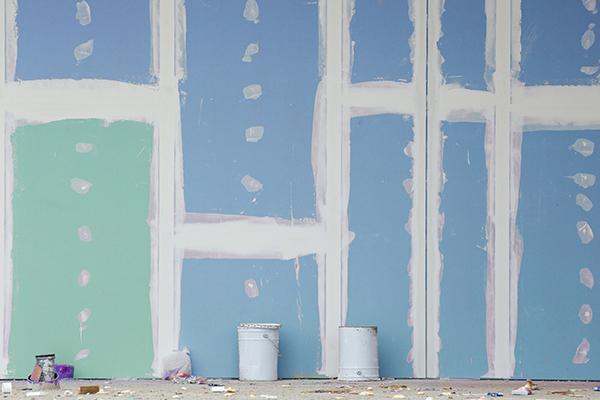
27- Plasterboard
Plasterboard is another term for drywall. Drywall is a panel made of gypsum plaster pressed between two thick sheets of paper and used to make interior walls and ceilings.
28- Rafter
A rafter is a structural member that supports the roof and provides a surface for the roof coverings. Rafters are typically placed in a regular pattern along the length of the roof, running from the ridge (the highest point) to the eaves (the lower edges). They may be made from timber, steel, or other materials.
Rafters provide structural support to transfer the load from the roof covering down to wall plates and structural supports below. They also provide a nailing surface for attaching insulation and roofing material.
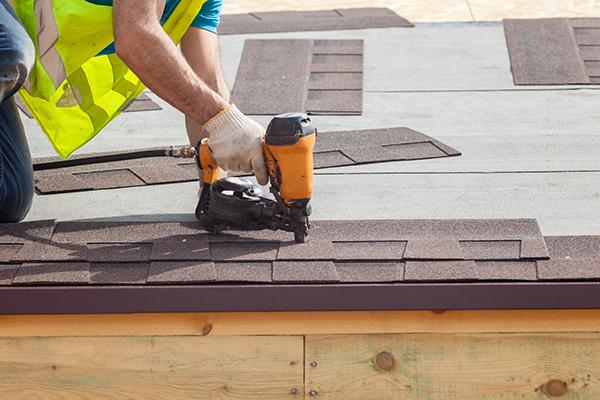
29- Shingle
A shingle is a type of roof covering that is made of overlapping rectangular pieces of material. Shingles are typically made from asphalt, fiberglass, wood, slate, metal, or composite materials. The pieces of material are usually large and thin and often have a granular surface to help shed water. They are installed in overlapping rows along the slope of a roof and can be laid in two common patterns: the standard alternating pattern and the staggered herringbone pattern.
30- Stud
A stud is a vertical framing member that provides support for walls and ceilings. It is a cylindrical metal rod, usually, steel used to hold two or more pieces of timber or other material together. Traditionally, studs were made from wood but modern studs are often made from metal. Studs can also be used for decorative purposes in interior design or architecture.
Don't let small repairs become big problems! Call us today to schedule your next handyman appointment.
Frequently Asked Questions
What tasks does a handyman do?
A handyman is a skilled laborer who can perform a variety of tasks related to home maintenance and repair. A handyman may be called upon to complete a wide range of jobs, including carpentry, plumbing, electrical work, painting, tiling, drywall installation, masonry and landscaping. Handymen are often called upon for smaller projects such as installing shelves or repairing fences. They may also be called upon to do larger jobs such as remodeling kitchens or bathrooms or replacing roofs and windows. In addition to these services, many handymen also offer general advice on home improvement projects. Handymen often have their own tools and equipment that they use to complete their jobs efficiently. They are generally well-versed in the latest techniques and products available for home repair and improvement projects. Therefore, if you are looking for someone who can take care of your home repairs quickly and professionally then hiring a handyman could be the perfect solution for you.
A handyman is a professional that performs various tasks around the house. They can do everything from minor repairs, such as fixing a leaky faucet or replacing light bulbs, to major projects like installing new flooring or renovating a bathroom. They can also help with painting and decorating, carpentry work, and basic plumbing and electrical work. Handymen are also experienced in assembling furniture, hanging shelves, and mounting TVs. They are capable of completing all types of home improvement tasks quickly and efficiently, making them an invaluable asset to any homeowner. With their expertise, they can turn a house into a home by giving it the attention it needs while saving money on costly contractors.
What do you call a female handyman?
A female handyman can be referred to as a handywoman, or handyperson. This term is preferred over other labels such as "handyman" or "male handyman" as it is gender-neutral and inclusive of all people who are able to complete home repairs and renovations.
A woman who is skilled at carrying out a variety of tasks around the home is invaluable. From plumbing and electrical work to painting and carpentry, a female handyman can tackle any job that needs doing. Not only can they save you money in the long run by fixing things yourself, but they can also help keep your home safe and well-maintained
A female handyman's services may be just what you need if you're looking for someone with the skills and expertise necessary for completing complex projects around your house. They have the know-how needed to take on challenging jobs and provide quality results in a timely manner. Hiring a female handywoman can be an ideal solution for those looking for an experienced professional with the experience necessary to handle any task efficiently and safely.
What are basic handyman skills?
Basic handyman skills are essential for completing many everyday tasks around the home or office. Handyman skills include basic carpentry, plumbing, electrical work, painting and drywall repair. Having the ability to identify and fix common problems in these areas can save you time and money. Other handyman skills include minor roofing repairs, appliance installation, and repair, minor landscaping such as mowing lawns and trimming hedges, as well as furniture assembly. Knowing how to use power tools such as power drills, saws and sanders is also a valuable skill for any handyman. Being able to safely use these tools can help when making repairs or building new projects. Knowledge of basic home maintenance is also important in order to keep your property in good condition. This includes knowing how to check for leaks or drafts and make minor repairs where necessary. With the right set of skills, a handyman can be an invaluable asset to any home or a business owner.
What makes a good handyman?
A good handyman is someone who has a wide range of skills and experience in many different areas of home repairs and improvements. They should be able to problem solve and think on their feet, as well as be able to communicate effectively with customers. They should have the ability to work quickly and efficiently, while still maintaining attention to detail. They must also have a keen eye for quality workmanship and use appropriate tools for the job at hand. Additionally, they should have knowledge of building codes and regulations in order to ensure that all work meets safety standards. Finally, a good handyman will possess excellent customer service skills in order to provide an optimal experience for their clients. All of these qualities make for an excellent handyman who can handle any task!
Why do people hire handymen?
People hire handymen for a variety of reasons. For one, they are generally cheaper than calling in a professional contractor or electrician. This means people can save money on repairs and upgrades to their home. Additionally, handymen often have a wide range of skills that can come in handy for many different types of jobs. They can do anything from hanging shelves to replacing windows and doors to installing appliances. Lastly, people appreciate the convenience that comes with having a handyman around the house; they don’t have to wait weeks or months to get their project completed as is often the case when dealing with larger companies. All in all, hiring a handyman is an excellent way for homeowners to save time and money while getting quality work done around the house.
Are Handyman services insured?
Handyman services are usually insured. This is to protect both the handyman and the customer from any potential liabilities that may arise due to an accident or injury on the job. The handyman will typically have general liability insurance that covers any property damage, personal injury, and medical payments incurred by either the customer or the handyman while the job is being completed. In addition to this, some handymen may also have additional insurance coverage for specific services such as electrical work or plumbing. It is important for customers to ask their handyman what type of insurance they carry before hiring them so they can be sure they are protected in case of an unexpected event occurring on the job.

